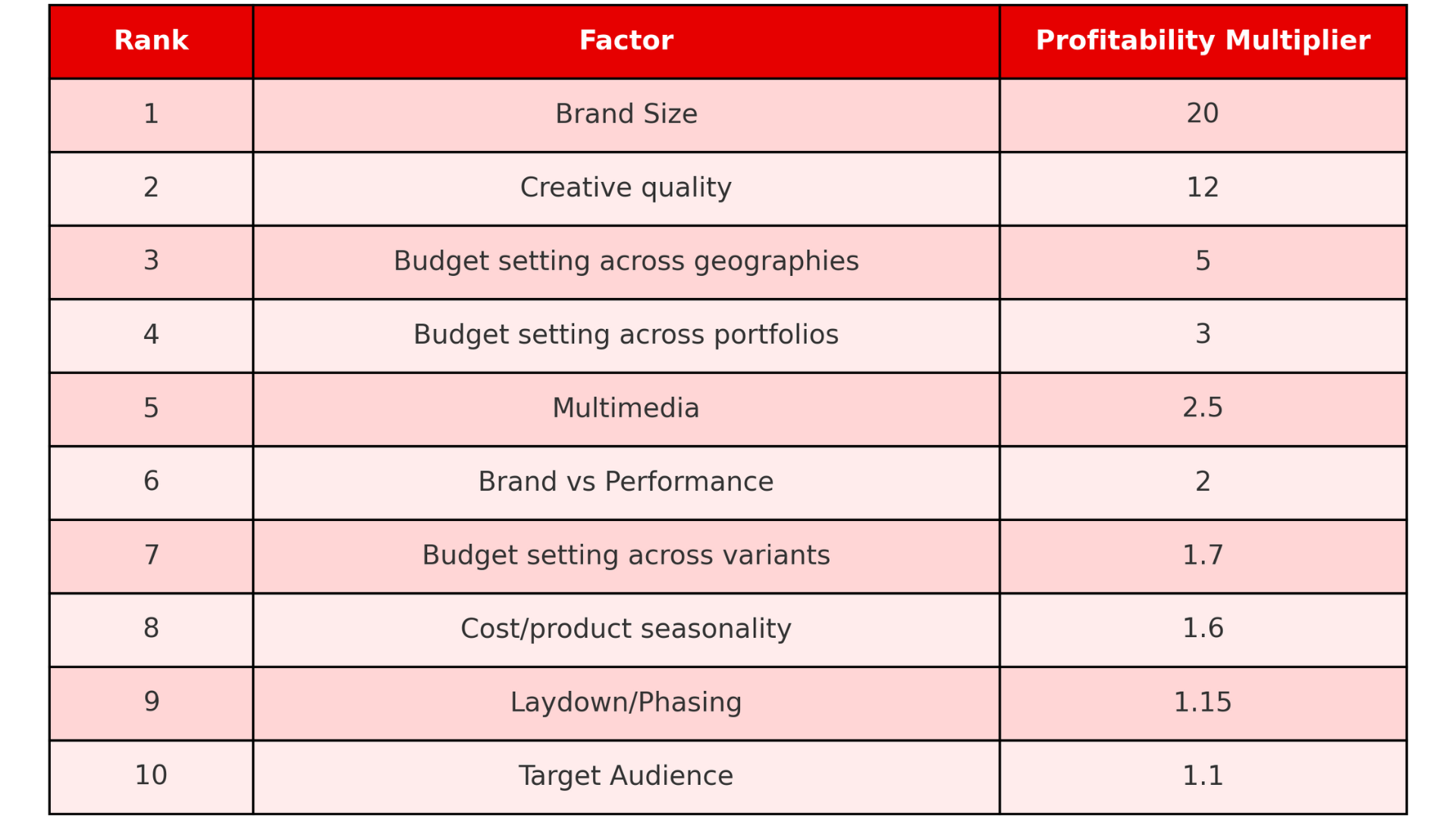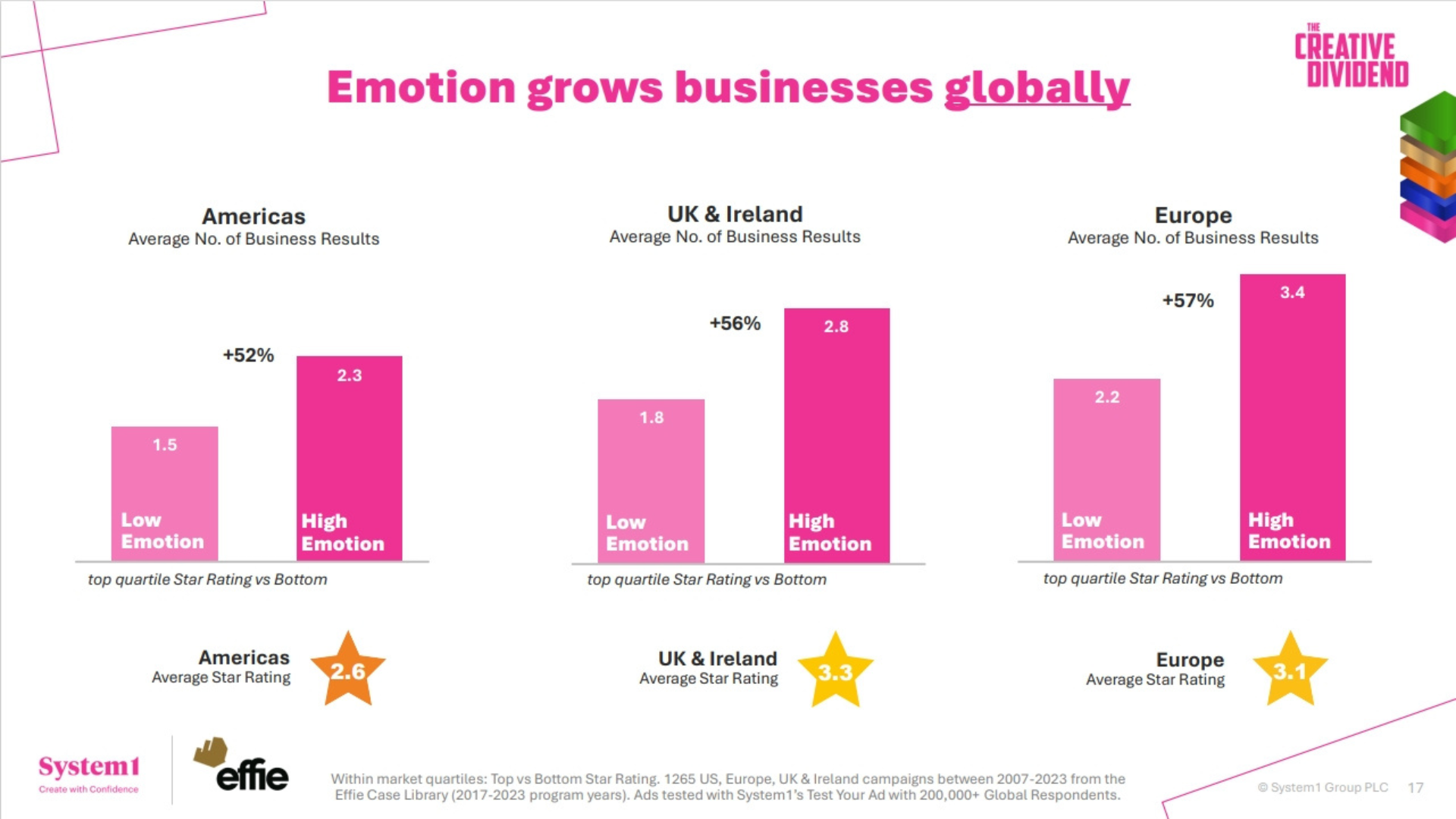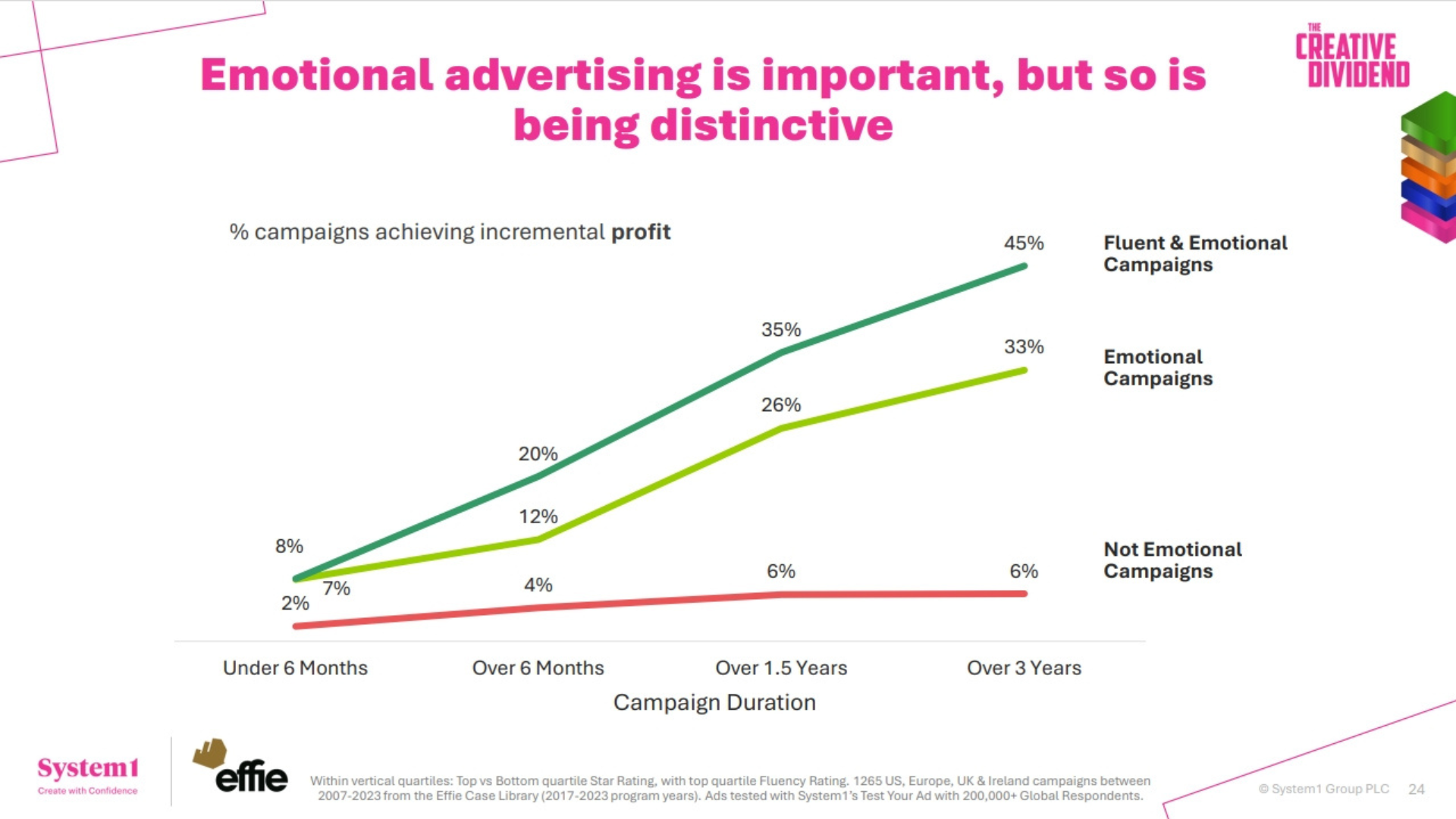Mark Ritson: Data finally shows us the “three factors” of good creative

Mark Ritson: Data finally shows us the “three factors” of good creative
Paul Dyson taught us that creativity is the biggest lever marketers can pull to drive advertising ROI. Mark Ritson – using data from System1 and Effie – tells us how.
Mark Ritson recently delivered his sold-out Cannes Lions talk on creative effectiveness in a virtual session: The Creative Dividend: Four Ads, Three Factors, Two Bears
The free, full-length webinar presents brand new research from System1 and the Effie Case Library, which analysed more than 1,250 campaign outcomes across the US and Europe alongside ad response data from 200,000+ people.
Mark has dug into the data and pulled out the three recurring factors that make creative “good.” Not subjectively good. Not Cannes Lion or Clio-awarded good. But creative that drives real business results.
Why does creative quality matter?
Creativity isn’t a hat that brands can decide to wear or not wear. Brands can’t afford to say, “that’s not really our thing.” Because at the centre of Mark’s talk – and the System1 x Effie report – is the work of econometrician Paul Dyson. His famous advertising profitability chart was originally published in 2006, revealing the top 10 factors that drive ROI. Three updates later, the data comes back the same.
After brand size, which marketers can’t do anything about in the short term, the greatest advertising ROI multiplier is creative quality (x12).

Great news. A brilliant ad can generate up to 12 times more profit than a rubbish ad. But what is brilliant?
“It doesn’t tell us a lot in terms of tactically what to do,” Mark says. “There’s nothing in the Dyson work that would tell us what is a 1 or a 12.”
The Creative Dividend finally and robustly answers that question. The research combines viewer data from System1’s Test Your Ad database, which measures how good the creative is, and the Effie database, which tells the holistic story of what business effects the creative actually achieved.
By bringing these two data sets together, System1 has been able to work out which aspects of creative are most effective in driving brand and business effects.
The full report slices and dices the monster data set in several interesting ways and introduces their own model for creative effectiveness, the “Creativity Stack.” Having spent a good bit of time with the research, Mark has distilled all of this down into three simple factors, or three recurring traits, of good creative ads that drive business results.
“What I’m trying to do in this session is give you advice about how to get the 12 and avoid the 1,” Mark says. “I’m going to talk about three things that enable you to get more profitability – effectiveness – from your advertising creative.”
1. Emotion (any emotion)
We’ve long understood that emotion is important in advertising, but the work from System1 shows us just how much it drives effectiveness. We’re not talking about “saccharine emotion,” says Mark, or the stereotypical evocation of puppies and babies. “All we’re talking about here is making the audience feel anything at all while experiencing an ad.”
Marketers can call upon the whole emotional gamut to make audiences feel startled, proud, frustrated, anxious, joyous… Any form of emotional reaction is what will help draw viewers into your narrative.
Whether the emotion is good or bad doesn’t matter
For all 1,250 campaigns in the report, System1 used their FaceTrace technology to measure viewers’ emotional responses in real time – generating a moment-by-moment map of their emotional journey. Whether the recorded emotion is good or bad doesn’t matter. High emotion ads generate more brand effects, and even bigger business effects, than low emotion ads.

Watch the full webinar on-demand for more on emotion and effectiveness. You’ll also see some real-time audience reaction data from a fantastically emotive, if not fantastically effective, ad (more on that next). But the key message here is emotion – any emotion – plays a huge role in getting you closer to Dyson’s 12x profit multiplier.
2. Fluency: “Do they know it’s me?”
In the previous section, we looked at an ad that scored off the charts for emotion. Viewers were happy, surprised and even a tiny bit fearful. But as Mark points out, most of us probably didn’t notice that the ad was for Bellagio, Las Vegas. System1’s FluencyTrace tool, which measures brand recognition, backs this up. By the end of the ad, only about 20% of viewers know who it’s for.
So, driving emotion is your first step, but “none of this matters,” Mark says, “without codification, distinctiveness, fluency, branding, whatever you want to call it… Do they know it’s me?”
MiniMBA alumni will probably talk about brand codification or distinctiveness, where System1 uses “fluency.” But all of these terms mean the same thing: How quickly and easily do audiences recognise a brand and its assets? Logos, sounds, characters, et cetera.
As the data predictably shows, all brand and business effects of a high emotion ad are eviscerated by weak branding.
“That seems obvious, so why don’t we do it more often?” says Mark. “It comes back to a central challenge of marketing. The way we make ads … is in direct opposition to the way they are consumed by the marketplace. We make these errors of not codifying our ads enough, because we make that awful assumption that everyone is paying the same amount of attention that we are to these completely ignored, 30 second vignettes …
“The emotion pulls in an otherwise uninterested consumer and the codification bangs them on the back of the head seven times that it’s you. Because they’re not paying attention, and they don’t care.”
Because they’re not paying attention, and they don’t care
Those who are disciplined in market orientation understand and capitalise on this. The marketers at Twix are masters of codification and have been hammering the same fluent devices for decades. Mark takes us through one of their ads to demonstrate what the best of both worlds looks like.
The ad gets a strong score for emotion – viewers experiencing a heady mix of fear, disgust, surprise and happiness. But the fluency rating is exceptional. Viewers begin to recognise the brand within seconds and, by the end of the ad, 100% know that it’s Twix. Over and over again, we see references to the two brown bars, the identical things, the snap. “You know that it’s Twix from a long way out,” says Mark.
Again, this isn’t new information, but it is the first time we’ve seen brand codification linked quantitatively in this way to real business results.
Another interesting thing System1 has done with their data is look into how many brand codes should be used in a 30 second ad to drive the highest chance of fluency. Comparing the frequency of brand codes to audience recall, System1 found that the magic number is seven. Across a huge data set, using seven brand codes results in 100% brand recall.
It can be the same brand code, or seven different brand codes – it doesn’t matter. But it’s obviously worth thinking about which types of brand code are most effective, Mark says. Reaffirming some of what we knew already, System1 looked at code types against high fluency scores. At the bottom end of the scale is logos, celebrities and brand colours, and up at the top is jingles, characters and sonic devices such as the Netflix TUDUM.
3. Time
Once you’ve got emotion and fluency, the third factor in driving creative effectiveness is simple: time.
Lots of studies have now shown the idea of creative “wear out” is a myth, and we should be more concerned about giving creative a chance to bed in. System1’s data found that campaigns which were emotional and fluent – and allowed to breathe over a span of three years – were 7.5x more effective in driving profit.

That doesn’t necessarily mean running the same ad, in stasis (although Coca-Cola’s classic “Holidays are Coming” keeps getting better with age). It could be variants of the same story, such as Specsavers’ 20-years-strong “Should’ve gone…” campaign, or Glenmorangie’s recent partnership with Harrison Ford, which the whiskey brand plans to cleverly eke out over the next three years.
That’s it. Three simple factors, entirely within marketers’ control, that drive creative effectiveness in advertising – according to huge amounts of data and the brilliant minds at System1.
Watch the full webinar with Mark Ritson for a much more detailed breakdown of these factors, along with a few examples of ads that are nailing it (and some that aren’t). Plus, a follow-on Q&A session with Mark Ritson and live attendees.
“The Creative Dividend: Four Ads, Three Factors, Two Bears” is available now on-demand. Watch the full webinar here.




